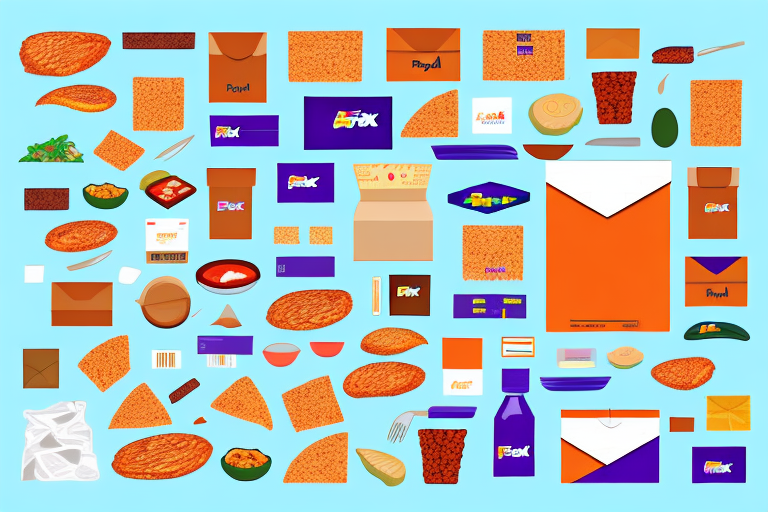Accurate Packaging and Weight Measurements
Accurate packaging and precise weight measurements are crucial when shipping food items with FedEx. The dimensions, weight, and contents of your package significantly influence the shipping cost. FedEx often re-measures and weighs packages, and discrepancies can lead to additional fees or delays. To ensure you are charged correctly and to avoid unexpected costs, it is essential to:
- Use proper scales: Invest in a reliable scale to measure the exact weight of your package.
- Measure dimensions accurately: Ensure that length, width, and height are correctly recorded.
- Choose appropriate packaging: Use sturdy materials that protect the contents and meet FedEx's packaging guidelines.
Proper packaging also enhances the safety of your food items during transit, reducing the risk of damage or spoilage.
Choosing the Right FedEx Shipping Method
FedEx Express vs. FedEx Ground
FedEx offers two primary shipping options for food items: FedEx Ground and FedEx Express. Your choice depends on factors such as delivery speed, cost, and the nature of the food items being shipped.
- FedEx Express: Ideal for perishable and temperature-sensitive goods requiring swift delivery, typically arriving within 1-2 business days.
- FedEx Ground: More cost-effective for non-perishable items or shipments that are not time-sensitive, with delivery times ranging up to 7 business days.
Additionally, consider the distance your shipment will travel. Local or regional shipments might benefit more from FedEx Ground due to lower costs, while long-distance or international shipments may require the expedited services of FedEx Express.
Factors Influencing FedEx Shipping Rates
Several factors affect FedEx shipping rates for food items. Understanding these can help you better estimate costs and identify areas for savings:
- Package Weight and Dimensions: Heavier and larger packages cost more to ship.
- Delivery Distance: Longer distances typically incur higher shipping fees.
- Shipping Speed: Faster delivery services like FedEx Express are more expensive than standard options.
- Additional Services: Temperature control, insurance, and special handling can increase costs.
- Seasonal Demand: Rates may fluctuate during peak seasons due to higher demand.
By considering these factors, you can make informed decisions to optimize your shipping strategy and manage costs effectively.
Cost-Saving Strategies for FedEx Shipping
Shipping food items can be costly, but several strategies can help reduce your FedEx shipping expenses:
- Opt for FedEx Ground: When speed is not a priority, choosing FedEx Ground can result in significant savings.
- Consolidate Shipments: Shipping multiple items together can qualify you for bulk discounts.
- Use Efficient Packaging: Select packaging that is both protective and minimizes weight and size to lower shipping costs.
- Utilize FedEx Online Tools: Use FedEx’s rate comparison and shipping calculators to find the most cost-effective options.
- Enroll in FedEx Programs: Programs like FedEx PowerShip and FedEx Small Business can offer discounts and benefits tailored to your shipping needs.
Implementing these strategies can help you manage shipping costs without compromising the quality and safety of your food items.
Best Practices for Packaging Perishable and Temperature-Sensitive Foods
Proper packaging is essential to maintain the freshness and safety of perishable and temperature-sensitive food items during transit. Follow these best practices to ensure your shipments arrive in optimal condition:
- Use Insulated Packaging: Insulated boxes and thermal materials help maintain the required temperature.
- Include Temperature Control Elements: Gel packs, dry ice, or refrigerants can keep items cold during transit. Note that shipping dry ice has specific regulations and requires proper labeling.
- Vacuum-Seal Products: Vacuum-sealing reduces exposure to air, helping preserve freshness and prevent contamination.
- Label Packages Clearly: Mark packages with labels such as "Perishable" or "Keep Refrigerated" to ensure careful handling.
- Avoid Extreme Weather Shipping: Plan shipments to avoid times with extreme temperatures, which can compromise the integrity of the food items.
Following these packaging guidelines helps protect your food items from spoilage and damage during shipping, ensuring customer satisfaction and compliance with food safety standards.
FedEx Liability Coverage and Insurance Options
While FedEx strives to handle your shipments with care, unforeseen events can lead to loss or damage of food items. Understanding FedEx's liability coverage and insurance options is vital for mitigating risks:
- Standard Liability: FedEx provides liability coverage up to $100 per package at no additional cost. This covers the basic value of the goods shipped.
- Additional Insurance: For higher-value shipments, purchasing additional insurance is recommended. Coverage can be extended up to 300% of the declared value, depending on the item and its value.
- Specialized Services: For perishable items, FedEx offers specialized packaging and shipping services to minimize risks during transit.
To ensure adequate protection, always declare the correct value of your shipments and review FedEx's insurance policies thoroughly. For more detailed information, visit FedEx Shipping Rates.
Tracking Shipments and Ensuring On-Time Delivery
Effective tracking is essential for ensuring that your food shipments arrive on time and in good condition. FedEx provides comprehensive tracking options to keep you informed throughout the shipping process:
- Online Tracking: Access real-time tracking information through the FedEx website or mobile app.
- Delivery Notifications: Sign up for email or SMS notifications to receive updates on your package’s status and delivery.
- Adjust Delivery Options: Modify delivery times or addresses as needed to accommodate recipient availability.
- Manage Exceptions: Stay informed about any delays or issues, allowing you to take proactive measures if necessary.
Proper tracking ensures transparency and allows you to address any potential issues promptly, enhancing the reliability of your shipping operations.
Understanding International Shipping Regulations and Fees for Food Items
Shipping food items internationally involves navigating various regulations and fees that differ by country. To ensure smooth and compliant international shipments with FedEx, consider the following:
- Import Restrictions: Research the destination country's regulations regarding permissible food items. Some countries have strict prohibitions or require specific documentation.
- Required Documentation: Common documents include certificates of origin, health certificates, and import permits. Ensure all necessary paperwork is completed accurately.
- Customs Duties and Taxes: Be aware of potential customs duties and taxes that may apply to your shipment. These costs can affect the overall shipping expenses.
- Packaging Standards: Adhere to international packaging standards to prevent delays or rejections at customs.
- Shipping Fees: International shipping typically incurs higher fees due to longer distances and additional handling requirements. Use FedEx’s international rate calculators to estimate costs accurately.
By understanding and complying with international shipping regulations, you can avoid delays, penalties, and ensure that your food items reach their global destinations safely and efficiently.
Conclusion
Understanding FedEx shipping rates and services for food items is essential for ensuring that your shipments arrive safely, on time, and within budget. By focusing on accurate packaging, selecting the appropriate shipping method, considering key factors affecting rates, and implementing cost-saving strategies, you can optimize your shipping process. Additionally, adhering to best practices for packaging, leveraging FedEx’s liability coverage, effectively tracking shipments, and complying with international regulations further enhance the reliability and efficiency of your food shipping operations.
For more detailed information and to access FedEx shipping tools, visit ShipScience.








